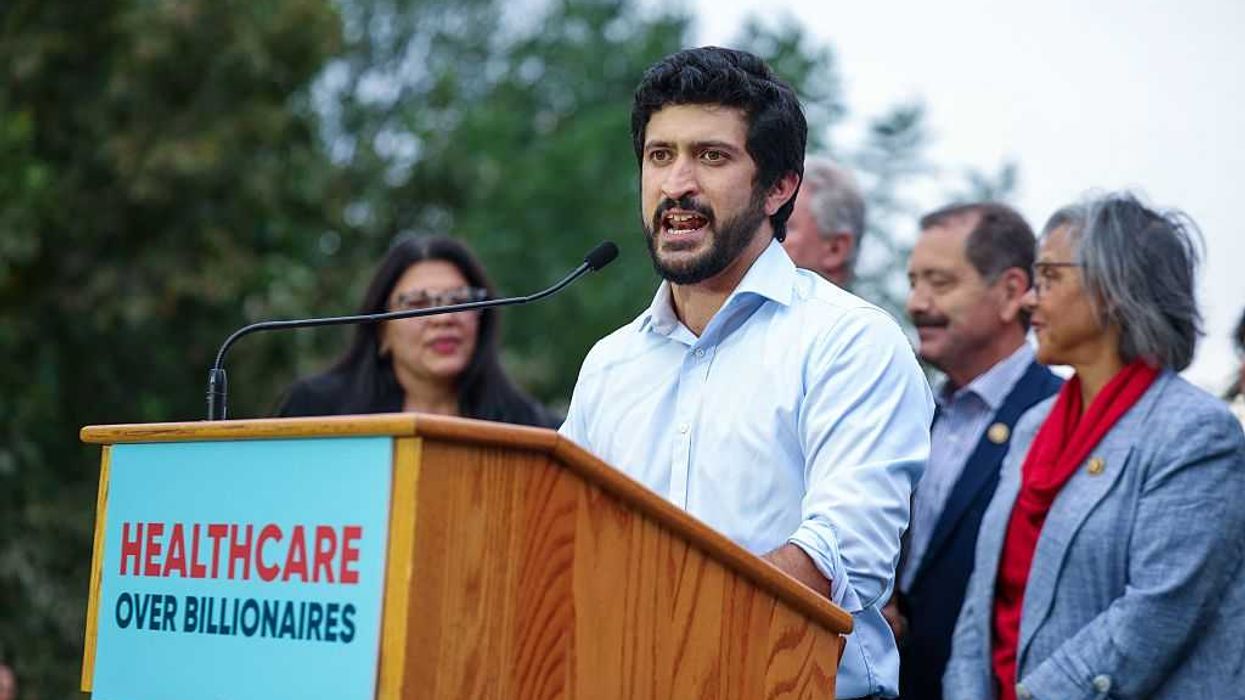'Truth Is Not a Fireable Offense': Former EPA Staffers File Legal Challenge Over Terminations by Trump
“Federal employees have the right to speak out on matters of public concern in their personal capacities, even when they do so in dissent,” said one of the lawyers representing the fired workers.
Six former employees of the US Environmental Protection Agency filed a First Amendment challenge in court on Wednesday to their firing earlier this year for criticizing the Trump administration's environmental policies.
The employees were among 160 who were fired shortly after signing a "declaration of dissent" in June against EPA Administrator Lee Zeldin, whom they said was “recklessly undermining” the agency’s mission and “ignoring scientific consensus to benefit polluters.”
In their claim before the US Merit Systems Protection Board, which adjudicates appeals from fired federal workers, the six employees argued that they were illegally fired for exercising their First Amendment right to free speech and that those firings were carried out in retaliation for their political affiliation.
The fired workers also argued that they arbitrarily received harsher treatment than many other employees who signed the letter, who were suspended without pay for two weeks.
According to Public Employees for Environmental Responsibility (PEER), one of the groups defending the employees, many of them had lengthy, distinguished careers of federal service.
One of them, John Darling, was a senior research biologist who spent over two decades helping the EPA curb the damage to endangered aquatic species.
Another, Tom Luben, is an expert in environmental epidemiology who worked at the EPA for over 18 years investigating how air pollution can cause pregnancy complications, and had received 14 National Honor Awards for his contributions over the years.
A third, Missy Haniewicz, served for a decade and was working on hazardous waste cleanup projects at more than 20 sites across Utah at the time she was fired.
PEER provided an example of one of the termination notices the fired employees received. Both the names of the employee and the official who sent the notice were redacted, along with other identifying information.
The termination notice states that the individual was fired for "conduct unbecoming of a federal employee." Although the document notes the employee's "[years] of federal service, most recent distinguished performance rating, awards, and... lack of disciplinary history," it says all of that was outweighed by the “serious nature of your misconduct.”
"The agency is not required to tolerate actions from its employees that undermine the agency’s decisions, interfere with the agency’s operations and mission, and the efficient fulfillment of the agency’s responsibilities to the public," the notice adds. "As an EPA employee, you are required to maintain proper discipline and refrain from conduct that can adversely affect morale in the workplace, foster disharmony, and ultimately impede the efficiency of the agency."
The legal team defending the employee and their colleagues argues that this is untrue. They argue that these employees' terminations violate the Civil Service Reform Act of 1978, which says employees are "protected against arbitrary action, personal favoritism, or coercion for partisan political purposes." It also protects whistleblowers who publicize information they reasonably believe to be a violation of law, abuse of authority, or danger to public health and safety.
“Federal employees have the right to speak out on matters of public concern in their personal capacities, even when they do so in dissent,” says Joanna Citron Day, general counsel for PEER. “EPA is not only undermining the First Amendment’s free speech protections by trying to silence its own workforce, it is also placing US citizens in peril by removing experienced employees who are tasked with carrying out EPA’s critical mission.”
The second Trump administration has laid off approximately 300,000 federal civil servants over the past year, with some of them being carried out in apparent retaliation for dissent.
On Tuesday—after being briefly reinstated—14 employees at the Federal Emergency Management Agency (FEMA) were placed back on administrative leave for signing an open letter of dissent in August, warning that cuts to the agency were putting it at risk of similar failures to those after Hurricane Katrina in 2005.
And weeks after over a thousand anonymous Department of Health and Human Services employees called for the resignation of Secretary Robert F. Kennedy Jr. in September, accusing him of "placing the health of all Americans at risk," more than a thousand employees across the department were culled in what was dubbed a "Friday Night Massacre."
Eden Brown Gaines, whose law firm is also defending the employees, said, “If America is to remain on the course of democracy and honor the principles of its Constitution, we must allow its judicial system to restore employment for those unjustly fired and our collective faith in our country."
"Truth is not a fireable offense," PEER said in a statement.


